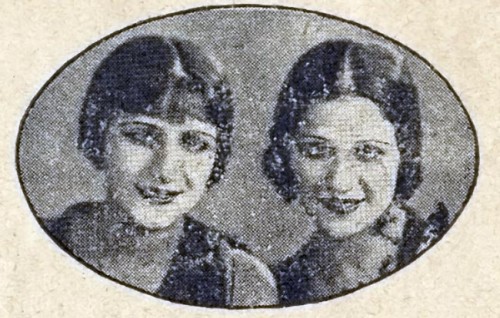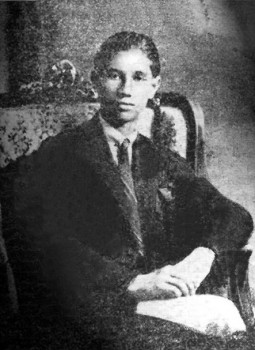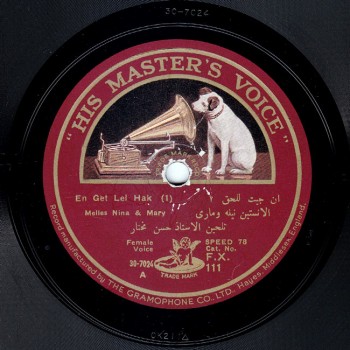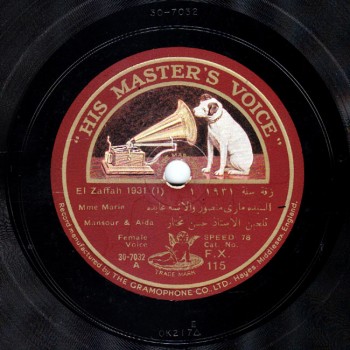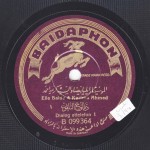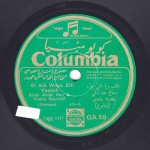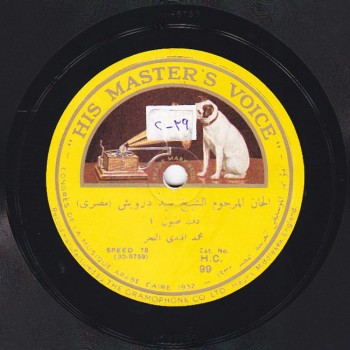 The Arab Music Archiving and Research foundation (AMAR), in collaboration with the Sharjah Art Foundation (SAF), presents “Durūb al-Nagham”.
The Arab Music Archiving and Research foundation (AMAR), in collaboration with the Sharjah Art Foundation (SAF), presents “Durūb al-Nagham”.
Dear listeners,
Welcome to a new episode of “Durūb al-Nagham”.
Today, we will be resuming our discussion about musical dialogues.
There were, earlier, female duos…
A phenomenon.
A phenomenon indeed: there are numerous discs of female duos. What about Nīnā and Mary, Mary Manṣūr and Miss ‘Ayda… ?
Nīnā and Mary clearly had some education. Furthermore, their singing was dual as they either sang accompanied by a takht or by a jazz band. Some of their songs were ordinary, while others included some racism, such as “Black Bottom”, a racist song against the black race… This is unbelievable… If there ever was censorship, it should be applied to such songs. Yet, on the other hand, they sang songs like “In gēt li-el-ḥa’’ ” a song at the peak of ṭarab which they had great ability for. I truly can’t understand why they did what they did with Odeon.
Let us listen to “In gēt li-el-ḥa’’ ”.
Let us listen to the beautiful duet “In gēt li-el-ḥa’’ ”. Note the harmony and synergy between their two voices that sing together all the time: there are neither questions nor answers, both sing in unison just like the 1960s’ “Al-thulāthī al-mariḥ” (The Jolly Trio). It is not a dialogue… it is more like group or choir singing.
Who is the band accompanying them?
…His Master’s Voice band.
(♩)
Nice….
Good performers…
Let us listen to a short excerpt of their jazz singing…
(♩)
Cute…
Not bad…
What about Mary Manṣūr and ‘Ayda?
Mary Manṣūr and ‘Ayda made significantly less recordings than Nīnā and Mary… Furthermore, was it the same Mary? Their blended voices make it impossible to find this out. I suggest we listen to the 1931 disc of the zaffa that is in fact between a zaffa and social criticism.
This was during the same period, i.e. 1931, with His master’s Voice.
Exactly…
(♩)
There is a tradition in western musical plays: duos singing different lyrics with the same melody.
…And sometimes two melodies or more.
Even two melodies… This is very often found in Opera, in Opera Bouffe, and in Boulevard Theatre plays.
Do we have any samples of this style?
There is a scene in the operetta “Shahrazād” composed in 1921 with the band of Sayyid Darwīsh after he separated from Najīb al-Rīḥānī. In this scene, former Bāsh Sanjqadār Qārā Ādam Ughlū, who had been exiled by Shahrazād, and his allies Qam‘ al-Dawla, and the minister who spoke with a Levantine accent (and who turns out to be from Zahleh) conspire against Za‘bulla, the new Bāsh Sanjqadār soldier Marshall Khashūshbār Jājānkīr, whom the Queen liked and appointed as Bāsh Sanjqadār, after relieving the other of his post. At the same time, Ḥūriyya and Za‘bulla are in love, while Queen Shahrazād wants to keep Za‘bulla for herself.
How was this translated into a duet?
There are two recordings of this scene that includes Za‘bulla going to war against the enemy, the Bāsh Sanjqadār conspiring against him, the Queen giving orders and the army obeying, added to Sayyid Darwīsh’s marvellous melody of the dialogue in the end of “Da’’it ṭubūl el-ḥarb yā khayyāla, we-iddī el-sā‘a dī sā‘it el-riggāla” composed to the rāst:
One with Muḥammad al-Baḥr made in 1932 at the Congress, with Muṣṭafa Riḍā playing the qānūn while he, or Sayyid Muṣṭafa, play the ‘ūd;
And a later orchestral recording arranged by Muḥammad Ḥasan al-Shugā‘ī who replaced the initial rāst with a major.
I suggest we do not listen to this recording, but rather to the one that is closer to Sheikh Sayyid Darwīsh’s intention and that includes two melodies sung together in the end: one tune wishing victory to the armies and telling them to obey the Bāsh Sanjqadār, and the other tune “Wāḥid yi‘la we-iḥnā talāta, ammā ‘agāyib ammā tabāta, wāḥid yi‘la we-iḥnā talātē” (one says “talāta” and another says “talātē” since, as we mentioned, the minister is from Zahleh and pronounces it with a Lebanese accent). They all conclude in the end with a shared melody, unlike the two separate melodies of the beginning.
This melody has a beautiful sound. Neither is it a counterpoint, nor can I say that he neither heard nor was influenced by the counterpoint. He was, yet produced something different.
Let us listen to this tune “Da’’it ṭubūl el-ḥarb yā khayyāla” from the operetta “Shahrazād”, by Muḥammad al-Baḥr, Sayyid Muṣṭafa, and Muṣṭafa Riḍā.
These are the recordings of the Congress…
Yes, these are the recordings of the 1932 Cairo Congress of Arab Music…
(♩)
Dear listeners,
We have reached the end of today’s episode of “Durūb al-Nagham”.
We will meet again in a new episode to resume our discussion about Musical Dialogues.
This episode was presented to you by Mr. Kamal Kassar.
“Durūb al-Nagham”.
- 221 – Zakariyya Ahmed – 12 (1/9/2022)
- 220 – Zakariyya Ahmed – 11 (1/9/2022)
- 219 – Zakariyya Ahmed – 10 (11/25/2021)
- 218 – Zakariyya Ahmed – 9 (10/26/2021)
- 217 – Zakariyya Ahmed – 8 (9/24/2021)
- 216 – Zakariyya Ahmed – 7 (9/4/2021)
- 215 – Zakariyya Ahmed – 6 (8/28/2021)
- 214 – Zakariyya Ahmed – 5 (8/6/2021)
- 213 – Zakariyya Ahmed – 4 (6/26/2021)
- 212 – Zakariyya Ahmed – 3 (5/27/2021)
- 211 – Zakariyya Ahmed – 2 (5/1/2021)
- 210 – Zakariyya Ahmed – 1 (4/28/2021)
- 209 – W-al-Lāhi lā astaṭī‘u ṣaddak 2 (4/6/2017)
- 208 – W-al-Lāhi lā astaṭī‘u ṣaddak 1 (3/30/2017)
- 207 – Bashraf qarah baṭāq 7 (3/23/2017)

